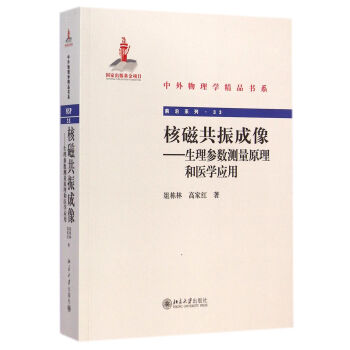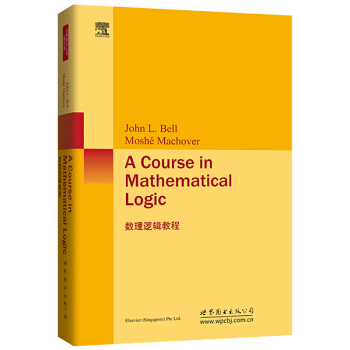![经典英文物理教材系列:宇宙学的物理基础 [Physical Foundations of COSMOLOGY]](https://pic.windowsfront.com/10096503/d120df60-0ce4-449c-8c3c-98573d0e0c1a.jpg)

具体描述
内容简介
This book is meant to be neither encyclopedic nor a sourcebook for the most recent observational data. In fact, I avoid altogether the presentation of data; after all the data change very quickly and are easily accessible from numerous available monographs as well as on the Intemet. Furthermore, I have intentionally restricted the discussion in this book to results that have a solid basis. I believe it is premature to present detailed mathematical consideration of controversial topics in a book on the foundations of cosmology and, therefore, such topics are covered only at a very elementary level.内页插图
目录
Foreword by Professor Andrei Linde PrefaceAcknowledgements
Units and conventions
Part I Homogeneous isotropic universe
1 Kinematics and dynamics of an expanding universe
1.1 Hubble law
1.2 Dynamics of dust in Newtonian cosmology
1.2.1 Continuity equation
1.2.2 Acceleration equation
1.2.3 Newtonian solutions
1.3 From Newtonian to relativistic cosmology
lForeword by Professor Andrei Linde Preface
Acknowledgements
Units and conventions
Part I Homogeneous isotropic universe
1 Kinematics and dynamics of an expanding universe
1.1 Hubble law
1.2 Dynamics of dust in Newtonian cosmology
1.2.1 Continuity equation
1.2.2 Acceleration equation
1.2.3 Newtonian solutions
1.3 From Newtonian to relativistic cosmology
1.3.1 Geometry of an homogeneous,isotropic space
1.3.2 The Einstein equations and cosmic evolution
1.3.3 Friedmann equations
1.3.4 Conformal time and relativistic solutions
1.3.5 Milne universe
1.3.6 De Sitter universe
2 Propagation of light and horizons
2.1 Light geodesics
2.2 Horizons
2.3 Conformal diagrams
2.4 Redshifl
2.4.1 Redshifl as a measure of time and distance
2.5 Kinematic tests
2.5.1 Angular diameter-redshift relation
2.5.2 Luminosity—redshifl relation
2.5.3 Number counts
2.5.4 Redshift evolution
3 The hot universe
3.1 The composition of the universe
3.2 Brief thermal history
3.3 Rudiments of thermodynamics
3.3.1 Maximal entropy state,thermal spectrum, conservation laws and chemical potentials
3.3.2 Energy density,pressure and the equation of state
3.3.3 Calculating integrals
3.3.4 Ultra—relativistic particles
3.3.5 Nonrelativistic particles
3.4 Lepton era
3.4.1 ChemicaI potentials
3.4.2 Neutrino decoupling and electrOn—pOsitrOn annihilation
3.5 NucleOsvnthesis
3.5.1 Freeze—OUt of neutrons
3.5.2“Deuterium bottleneck”
3.5.3 Helium一4
3.5.4 Deuterium
3.5.5 The other light elements
3.6 Recombination
3.6.1 Helium recombination
3.6.2 Hydrogen recombination:equilibrium consideration
3.6.3 Hydrogen recombination:the kinetic approach
4 The very early universe
4.1 Basics
4.1.1 Local gauge invariance
4.1.2 Non—Abelian gauge theories
4.2 Quantum chromodynamics and quark-gluon plasma
4.2.1 Running coupling constant and asymptotic freedom
4.2.2 Cosmological quark-gluon phase transition
4.3 Electroweak theory
4.3.1 Fermion content
4.3.2“Spontaneous breaking”of U(1)symmetry
4.3.3 Gauge bosons
4.3.4 Fermion interactions
4.3.5 Fermion masses
4.3.6 CP violation
4.4 “Symmetry restoration”and phase transitions
4.4.1 Effective potential
4.4.2 U(l)model
4.4.3 Symmetry restoration at high temperature
4.4.4 Phase transitions
4.4.5 Electroweak phase transition
4.5 Instantons.sphalerons and the early universe
4.5.1 Particle escape from a potential well
4.5.2 Decay of the metastable vacuum
4.5.3 The vacuum structure of gauge theories
4.5.4 Chiral anomaly and nonconservation of the fermion number
4.6 Beyond the Standard Model
4.6.1 Dark matter candidates
4.6.2 Baryogenesis
4.6.3 Topological defects
5 Inflation I:homogeneous limit
5.1 Problem of initial conditions
5.2 Inflation:main idea
5.3 How can gravity become“repulsive”?
5.4 How to realize the equation of state P≈一#####
5.4.1 Simple example:V=m2#4#####
5.4.2 General potential:slow—roll approximation
5.5 Preheating and reheating
5.5.1 Elementary theory
5.5.2 Narrow resonance
5.5.3 Broad resonance
5.5.4 Implications
5.6 “Menu”of scenarios
Part II Inhomogeneous universe
6 Gravitational instability in Newtonian theory
6.1 Basic equations
6.2 Jeans theory
6.2.1 Adiabatic perturbations
6.2.2 Vector perturbations
6.2.3 Entropy perturbations
6.3 Instability in an expanding universe
6.3.1 Adiabatic perturbations
6.3.2 Vector perturbations
6.3.3 Self-similar solution
6.3.4 Cold matter in the presence of radiation or dark energy
6.4 Beyond linear approximation
6.4.1 Tolman solution
6.4.2 Zel’dovich solution
6.4.3 Cosmic web
7 Gravitational instability in General Relativity
7.1 Perturbations and gauge—invariant variables
7.1.1 Classification of perturbations
7.1.2 Gauge transformations and gauge—invariant variables
7.1.3 COOrdinate systems
7.2 Equations for cosmological perturbations
7.3 Hydrodynamical perturbations
7.3.1 Scalar perturbations
7.3.2 Vector and tensor perturbations
7.4 Baryon-radiation plasma and cold dark matter
7.4.1 Equations
7.4.2 Evolution of perturbations and transfer functions
8 Inflation II:origin of the primordial inhomogeneities
8.1 Characterizing perturbations
8.2 Perturbations on inflation(slow—roll approximation)
8.2.1 Inside the Hubble scale
8.2.2 The spectrum of generated perturbations
8.2.3 Why dO we need inflation?
8.3 Quantum cosmological perturbations
8.3.1 Equations
8.3.2 Classical solutions
8.3.3 Quantizing perturbations
8.4 Gravitationa waves from inflation
8.5 Self_reDroductiOn of the universe
8.6 Infation as a theory with predictive power
9 Cosmic microwave background anisotropies
9.1 Basics
9.2 Sachs-Wolfe eflfect
9.3 Initial conditions
9.4 Correlation function and multipoles
9.5 Anisotropies on large angular scales
9.6 Delayed recombination and the finite thickness effect
9.7 Anisotropies on small angular scales
9.7.1 Transfer functions
9.7.2 Multipole moments
9.7.3 Parameters
9.7.4 Calculating the spectrum
9.8 Determining cosmic parameters
9.9 Gravitational waves
9.10 Polarization of the cosmic microwave background
9.10.1 Polarization tensor
9.10.2 Thomson scattering and polarization
9.10.3 Delayed recombination and polarization
9.10.4 E and B polarization modes and correlation functions
9.1l Reionization
Bibliography
Expanding universe(Chapters 1 and 2)
Hot universe and nucleosvnthesis(Chapter 3)
Particle physics and early universe(Chapter 4)
Inflation (Chapters 5 and 8)
Gravitational instability(Chapters 6 and 7)
CMB fluctuations(Chapter 9)
lndex
3.1 Geometry of an homogeneous,isotropic space
1.3.2 The Einstein equations and cosmic evolution
1.3.3 Friedmann equations
1.3.4 Conformal time and relativistic solutions
1.3.5 Milne universe
1.3.6 De Sitter universe
2 Propagation of light and horizons
2.1 Light geodesics
2.2 Horizons
2.3 Conformal diagrams
2.4 Redshifl
2.4.1 Redshifl as a measure of time and distance
2.5 Kinematic tests
2.5.1 Angular diameter-redshift relation
2.5.2 Luminosity—redshifl relation
2.5.3 Number counts
2.5.4 Redshift evolution
3 The hot universe
3.1 The composition of the universe
3.2 Brief thermal history
3.3 Rudiments of thermodynamics
3.3.1 Maximal entropy state,thermal spectrum, conservation laws and chemical potentials
3.3.2 Energy density,pressure and the equation of state
3.3.3 Calculating integrals
3.3.4 Ultra—relativistic particles
3.3.5 Nonrelativistic particles
3.4 Lepton era
3.4.1 ChemicaI potentials
3.4.2 Neutrino decoupling and electrOn—pOsitrOn annihilation
3.5 NucleOsvnthesis
3.5.1 Freeze—OUt of neutrons
3.5.2“Deuterium bottleneck”
3.5.3 Helium一4
3.5.4 Deuterium
3.5.5 The other light elements
3.6 Recombination
3.6.1 Helium recombination
3.6.2 Hydrogen recombination:equilibrium consideration
3.6.3 Hydrogen recombination:the kinetic approach
4 The very early universe
4.1 Basics
4.1.1 Local gauge invariance
4.1.2 Non—Abelian gauge theories
4.2 Quantum chromodynamics and quark-gluon plasma
4.2.1 Running coupling constant and asymptotic freedom
4.2.2 Cosmological quark-gluon phase transition
4.3 Electroweak theory
4.3.1 Fermion content
4.3.2“Spontaneous breaking”of U(1)symmetry
4.3.3 Gauge bosons
4.3.4 Fermion interactions
4.3.5 Fermion masses
4.3.6 CP violation
4.4 “Symmetry restoration”and phase transitions
4.4.1 Effective potential
4.4.2 U(l)model
4.4.3 Symmetry restoration at high temperature
4.4.4 Phase transitions
4.4.5 Electroweak phase transition
4.5 Instantons.sphalerons and the early universe
4.5.1 Particle escape from a potential well
4.5.2 Decay of the metastable vacuum
4.5.3 The vacuum structure of gauge theories
4.5.4 Chiral anomaly and nonconservation of the fermion number
4.6 Beyond the Standard Model
4.6.1 Dark matter candidates
4.6.2 Baryogenesis
4.6.3 Topological defects
5 Inflation I:homogeneous limit
5.1 Problem of initial conditions
5.2 Inflation:main idea
5.3 How can gravity become“repulsive”?
5.4 How to realize the equation of state P≈一#####
5.4.1 Simple example:V=m2#4#####
5.4.2 General potential:slow—roll approximation
5.5 Preheating and reheating
5.5.1 Elementary theory
5.5.2 Narrow resonance
5.5.3 Broad resonance
5.5.4 Implications
5.6 “Menu”of scenarios
Part II Inhomogeneous universe
6 Gravitational instability in Newtonian theory
6.1 Basic equations
6.2 Jeans theory
6.2.1 Adiabatic perturbations
6.2.2 Vector perturbations
6.2.3 Entropy perturbations
6.3 Instability in an expanding universe
6.3.1 Adiabatic perturbations
6.3.2 Vector perturbations
6.3.3 Self-similar solution
6.3.4 Cold matter in the presence of radiation or dark energy
6.4 Beyond linear approximation
6.4.1 Tolman solution
6.4.2 Zel’dovich solution
6.4.3 Cosmic web
7 Gravitational instability in General Relativity
7.1 Perturbations and gauge—invariant variables
7.1.1 Classification of perturbations
7.1.2 Gauge transformations and gauge—invariant variables
7.1.3 COOrdinate systems
7.2 Equations for cosmological perturbations
7.3 Hydrodynamical perturbations
7.3.1 Scalar perturbations
7.3.2 Vector and tensor perturbations
7.4 Baryon-radiation plasma and cold dark matter
7.4.1 Equations
7.4.2 Evolution of perturbations and transfer functions
8 Inflation II:origin of the primordial inhomogeneities
8.1 Characterizing perturbations
8.2 Perturbations on inflation(slow—roll approximation)
8.2.1 Inside the Hubble scale
8.2.2 The spectrum of generated perturbations
8.2.3 Why dO we need inflation?
8.3 Quantum cosmological perturbations
8.3.1 Equations
8.3.2 Classical solutions
8.3.3 Quantizing perturbations
8.4 Gravitationa waves from inflation
8.5 Self_reDroductiOn of the universe
8.6 Infation as a theory with predictive power
9 Cosmic microwave background anisotropies
9.1 Basics
9.2 Sachs-Wolfe eflfect
9.3 Initial conditions
9.4 Correlation function and multipoles
9.5 Anisotropies on large angular scales
9.6 Delayed recombination and the finite thickness effect
9.7 Anisotropies on small angular scales
9.7.1 Transfer functions
9.7.2 Multipole moments
9.7.3 Parameters
9.7.4 Calculating the spectrum
9.8 Determining cosmic parameters
9.9 Gravitational waves
9.10 Polarization of the cosmic microwave background
9.10.1 Polarization tensor
9.10.2 Thomson scattering and polarization
9.10.3 Delayed recombination and polarization
9.10.4 E and B polarization modes and correlation functions
9.1l Reionization
Bibliography
Expanding universe(Chapters 1 and 2)
Hot universe and nucleosvnthesis(Chapter 3)
Particle physics and early universe(Chapter 4)
Inflation (Chapters 5 and 8)
Gravitational instability(Chapters 6 and 7)
CMB fluctuations(Chapter 9)
lndex
前言/序言
用户评价
“经典英文物理教材系列:宇宙学的物理基础”这个书名,第一时间就勾起了我对宇宙宏大叙事的无限遐想。我一直认为,要真正理解宇宙,离不开对其物理基础的深入探索。而“经典”二字,则预示着这本书必然蕴含着经过时间沉淀的智慧和深刻的洞见。作为一名对宇宙学充满好奇但又缺乏系统知识的读者,我迫切希望能找到一本能够引领我入门的权威教材。我期望这本书能够以一种系统、严谨但又不失趣味的方式,为我打开宇宙学的大门。我特别关注书中是否能够清晰地阐述广义相对论在描述宇宙时空结构中的关键作用,以及早期宇宙的物理过程,例如宇宙暴胀理论是如何解决视界问题和平面性问题的。我渴望通过这本书,理解宇宙膨胀的内在驱动力,以及暗物质和暗能量在塑造宇宙命运中所扮演的角色。如果书中能够提供一些直观的物理图像和数学推导的简要介绍,那就更佳了。我希望这本书不仅能教授我知识,更能激发我对宇宙学的进一步探索热情,让我能够站在前人的肩膀上,去感受宇宙的博大精深。
评分书名“经典英文物理教材系列:宇宙学的物理基础”就自带一种权威感和历史厚重感,这正是我一直以来寻找的。我对于宇宙学这个宏大的学科充满了敬畏和好奇,但又常常被市面上过于碎片化的信息所困扰,缺乏一个清晰、系统的认识。我相信一本“经典”的教材,能够提供最扎实的根基。我期待这本书能够带领我深入探究宇宙学最根本的物理原理,比如如何用相对论来理解宇宙的尺度和演化,以及我们是如何通过观测来验证这些理论的。我尤其希望能够理解宇宙大爆炸的物理过程,包括早期宇宙的温度、密度以及能量的转化,还有宇宙微波背景辐射所蕴含的丰富信息。同时,我也很想知道书中是如何解释当前宇宙中观测到的各种现象,例如星系的形成和分布,以及暗物质和暗能量的存在是如何被推断出来的。我希望这本书能够提供清晰的逻辑脉络和深入浅出的讲解,让我能够逐步建立起对宇宙学整体图景的理解,而不是仅仅停留在一些零散的知识点上。
评分这本书的书名“经典英文物理教材系列:宇宙学的物理基础”着实让我眼前一亮。我一直以来都对宇宙的起源和演化充满了浓厚的兴趣,但又苦于难以找到一本既能深入讲解物理原理,又能让我这个非专业人士读懂的读物。看到“经典英文物理教材系列”这样的表述,我立刻联想到那些经过时间检验、被广泛认可的权威著作。这让我对本书的内容质量充满了信心。我期待这本书能够以一种严谨而又不失易懂的方式,为我揭示宇宙学的核心物理机制。想象一下,通过这本书,我能够理解宇宙大爆炸的理论基础,能够掌握宇宙膨胀的动力学方程,甚至能够窥探暗物质和暗能量的神秘面纱。我尤其希望书中能够对宇宙微波背景辐射的物理意义进行详细的阐述,以及它如何为我们提供了早期宇宙的宝贵信息。此外,我也对书中如何讲解大尺度结构的形成过程,以及星系演化的物理模型感到非常好奇。我希望作者能够用清晰的语言和恰当的例子,帮助我理解那些抽象而又迷人的物理概念,从而建立起我对宇宙学基本原理的深刻认识。
评分当我在书店偶然瞥见这本书时,“经典英文物理教材系列”这几个字就立刻吸引了我的目光。我一直认为,真正经典的教材才能经得起时间的考验,也最能体现一门学科的精髓。而“宇宙学的物理基础”这个副标题,更是让我对它的内容充满了期待。我一直对宇宙的起源和演化充满了好奇,但常常觉得市面上的科普读物过于浅显,而专业书籍又过于晦涩。我希望这本书能够填补这个空白,用严谨的物理学原理来解释宇宙的种种现象,同时又能保持一定的可读性。我期待这本书能够深入浅出地讲解宇宙学中最核心的物理概念,例如广义相对论在宇宙学中的应用,早期宇宙的相变,以及暗物质和暗能量的性质。我希望书中能够提供清晰的数学推导,但同时又不至于让非专业读者望而却步。如果书中能够配上一些精美的插图和图表,那就更完美了,能够帮助我更好地理解那些复杂的物理过程。我非常想知道作者是如何构建这本书的逻辑框架的,是按照时间顺序来讲述宇宙的演化,还是按照物理概念的重要性来组织内容?我对此充满好奇,并希望它能带给我一次愉快的阅读体验。
评分这本书的标题本身就充满了吸引力——“经典英文物理教材系列:宇宙学的物理基础”。光是“经典”二字,就让人联想到那些奠定学科根基、历经时间考验的鸿篇巨著。而“宇宙学的物理基础”更是点燃了我对宇宙起源、演化以及宏观结构的无限好奇。作为一个业余的物理爱好者,我一直对宇宙的奥秘心驰神往,但又常常被过于高深的数学推导和概念所困扰。我期待着这本书能够以一种既严谨又不失清晰的方式,为我揭示宇宙学的核心物理原理。想象一下,通过这本书,我能够理解大爆炸理论背后的能量密度涨落,能够掌握宇宙膨胀的动力学方程,甚至能够一窥暗物质和暗能量的神秘面纱。我希望这本书能够成为我深入探索宇宙奥秘的敲门砖,让我能够站在巨人的肩膀上,仰望星辰大海。我尤其关心书中对早期宇宙物理过程的讲解,比如宇宙微波背景辐射的起源,以及这些辐射携带的关于宇宙早期状态的信息。同时,我也很想知道书中是如何处理宇宙演化到今天这个状态的,包括星系形成、大尺度结构的形成等过程。我希望作者能够提供一些直观的类比和生动的例子,帮助我理解这些抽象的物理概念。
评分纸张 印刷 都很好 内容还行 呵呵 很薄 凑活着看吧
评分印刷不错,纸张可以,折扣诱人
评分评价可以赚京豆。。。。。
评分很不错
评分不错,很喜欢的一本书。
评分Mukhanov 的著名综述,arXiv 有电子版
评分中文物理都没学好,给朋友买了一本外文的,他说很不错。我是看不懂。
评分经典书籍,买来先收藏
评分经典英文物理教材系列:宇宙学的物理基础
相关图书
本站所有内容均为互联网搜索引擎提供的公开搜索信息,本站不存储任何数据与内容,任何内容与数据均与本站无关,如有需要请联系相关搜索引擎包括但不限于百度,google,bing,sogou 等
© 2025 book.coffeedeals.club All Rights Reserved. 静流书站 版权所有




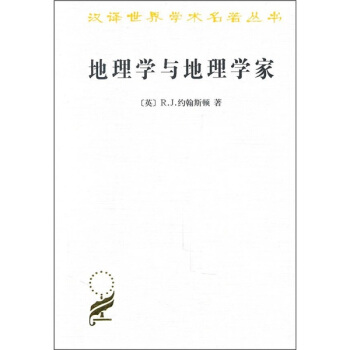
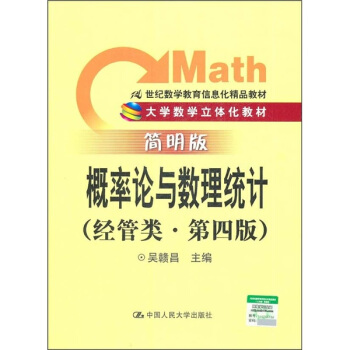
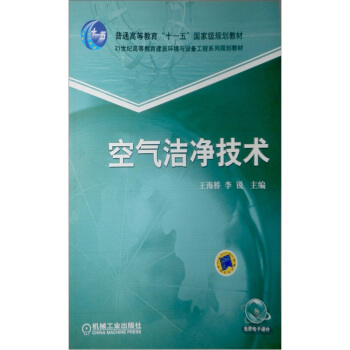
![粒子物理概念(第3版) [The Ideas of Particle Physics:An Introduction for Scientists Third edition] pdf epub mobi 电子书 下载](https://pic.windowsfront.com/10914282/4cd9d24a-6c7b-4c93-806f-e006d43d5fca.jpg)
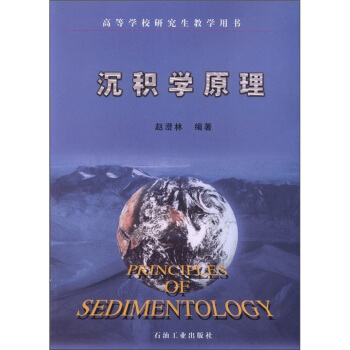
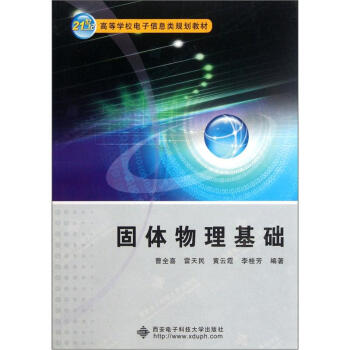



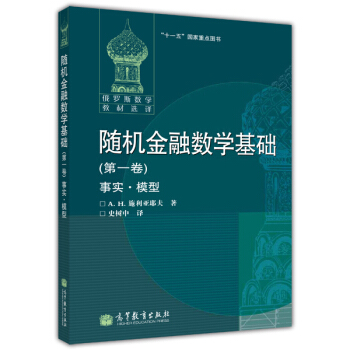
![生物化学与分子生物学 [Biochemistry and Molecular Biology] pdf epub mobi 电子书 下载](https://pic.windowsfront.com/11426306/5398fdf2N048684a9.jpg)


